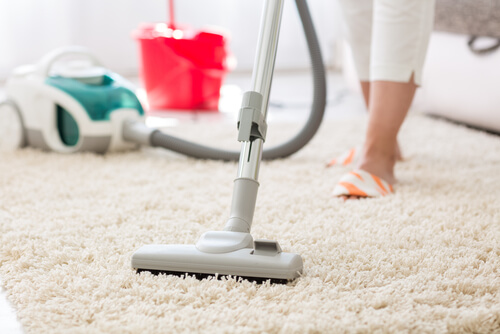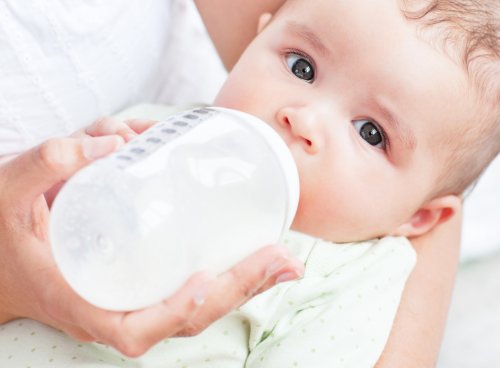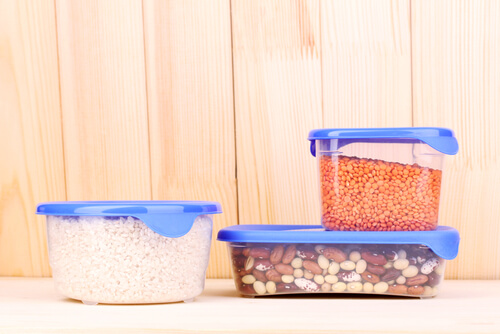7 Toxic Items in Your Home


Reviewed and approved by the doctor Mariel Mendoza
There are certain items that are found in practically any home that regardless of their common presence, are still toxic. Today, we want to make you aware of a few toxic items that you probably have at home. Pay attention and keep them in mind.
1. Products made with wood chips
Why are products made with wood chips (like particle board) hazardous?
The shavings from wood and sawdust are usually glued together with urea formaldehyde resins, a kind of poison that directly affects your respiratory tract and eyes.
It can also cause problems for animals.
The risk increases if these products are older, because newer ones have higher regulation standards and not all of them use the toxic resins.
What can you do?
- To find out if your furniture is safe, you’ll have to verify the product certificates according to international standards, the materials with which the wood was made, and so on.
- Remember that they should be in emissions class E1, and no higher.
Read also: 7 tips for reducing mites at home
2. Carpet and rugs
 Why is your carpet dangerous?
Why is your carpet dangerous?
Carpets are made with different adhesives and dyes. These products release volatile organic compounds that can lead to headaches, allergies and fatigue.
Carpet can be particularly harmful because unlike a rug, it covers the entire floor and sticks to it. This makes it even more difficult to eliminate dust mites that can cause allergies and asthma.
What can you do?
- If your carpet is very old, it’s a good idea to purchase a new one that’s made with natural materials that have not been treated.
- It’s a good idea to avoid large carpet sizes so that they are easier to clean.
3. Laser printers
Laser printers emit tiny particles into the air that come from the printing powder. These particles penetrate the lungs and can lead to a variety of pulmonary and cardiovascular diseases.
What can you do?
- If you have a laser printer at home, be sure to store it in a well-ventilated room.
4. Baby bottles

It’s a type of plastic that has a structure very similar to human estrogen, and has become known as a “hormonal destroyer.” This plastic causes serious hormonal disorders in children.
What can you do?
The best thing to do is to look for alternative products that are made with safe materials and to check the labels beforehand for the composition.
5. Mattresses
Many mattresses have high levels of polybrominated diphenyl ether, a product that can cause health problems when you’re exposed to it.
This material is especially dangerous for children.
What can you do?
- Old mattresses are much more likely to contain these substances. If you haven’t replaced your mattress in a long time, it’s time to trade it for one that’s made with natural products.
6. Tupperware

These can affect your endocrine system, reproductive system, and cause high blood pressure, as well as insulin resistance.
What can you do?
- Try to substitute plastic Tupperware for glass or ceramic containers as much as possible.
- Otherwise, choose containers made of polyethylene or polypropylene.
- Don’t forget that you should never heat your food in the microwave using a container that’s made with thin plastic.
We recommend reading: Plastic, the silent killer
7. Clothing softener
Softeners for your clothes will indeed leave your garments softer but they’re actually coating them with a thin layer of toxic chemicals.
These can cause skin irritations, respiratory problems, and headaches.
What can you do?
- Even if you don’t use more than the recommended amount, it’s better to avoid using clothing softeners with children’s clothes.
- You can always use a natural method to improve the smell of your clothing.
All cited sources were thoroughly reviewed by our team to ensure their quality, reliability, currency, and validity. The bibliography of this article was considered reliable and of academic or scientific accuracy.
- Bustamante-Montes, P., Lizama-Soberanis, B., Olaíz-Fernández, G., & Vázquez-Moreno, F. (2001). Ftalatos y efectos en la salud. Revista Internacional de Contaminacion Ambiental. https://doi.org/10.1021/jp811282f
- Goloubkova, T., & P, M. S. (2000). Bisfenol A. Scientific Eletronic Library Online. https://doi.org/10.1063/1.1146042
- Covarrubias Velázquez, H. E., Galindo, A. S., & Facio, A. O. C. (2016). RESINAS TERMOESTABLES DE FENOL-FORMALDEHÍDO. Rev. Iberoam. Polímeros.
This text is provided for informational purposes only and does not replace consultation with a professional. If in doubt, consult your specialist.








